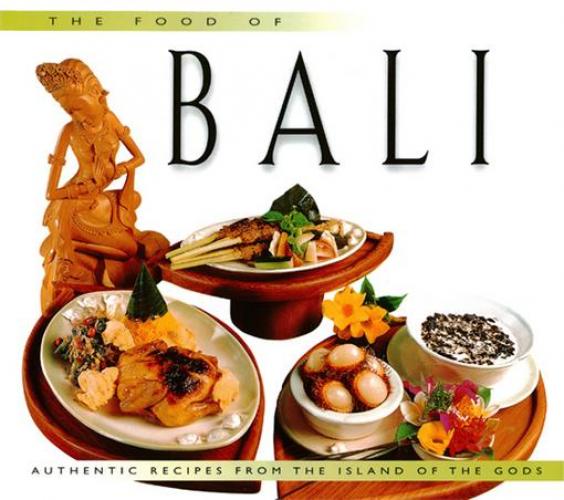Mount Agung, Bali's most sacred mountain, dominates the landscape of eastern Bali.
Published by Periplus Editions (HK) Ltd.
Copyright © 1995
Periplus Editions (HK) Ltd.
All Rights Reserved
ISBN: 978-1-4629-50571-3 (ebook)
Library of Congress Catalog Card Number: 98-83179
Distributed by
North America, Latin America Europe
Tuttle Publishing
364 Innovation Drive
North Clarendon, VT 05759-9436 U.S.A.
Tel: 1 (802) 773-8930; Fax: 1 (802) 773-6993
Japan
Tuttle Publishing
Yaekari Building, 3rd Floor
5-4-12 Osaki
Shinagawa-ku
Tokyo 141-0032
Tel: (81) 3 5437-0171; Fax: (81) 3 5437-0755
Asia Pacific
Berkeley Books Pte. Ltd.
61 Tai Seng Avenue, #02-12
Singapore 534167
Tel: (65) 6280-1330; Fax: (65) 6280-6290
First Edition
12 11 10 9 8
15 14 13 12
Printed in Singapore 1110CP
Acknowledgments
I would like to thank all those people whose whole-hearted support made this book possible. First and foremost. Mr. Peter Stettler, General Manager of Grand Hyatt Bali, for his unfailing and enthusiastic assistance throughout the preparation of this book. Cherrie and Desmond I till offered continuous personal support and photographic advice. Sharon Antis patiently spent hours helping put the recipes into shape. My thanks to all the chefs of the Grand Hyatt Bali, in particular, Wayan Widiana and Martin Graham and his team who were responsible for the preparation of the food. A special thank you to Brent Hesslyn, both for introductions and for the creation of all tableware used in the book. Thanks also to Puri Sakana Antiques Art Gallery and owner I Wayan Dupa Suciptra and woodcarver Ida Bagus Tilem for providing all the carvings used in the photographs. Finally, I would like to thank my editor, Wendy Hutton, whose professional expertise and long experience with Southeast Asian cuisines helped bring the work of all of us to the final stages.—Heinz von Holzen
All ceramics appearing in this book were designed and produced by Jenggala Keramik, Bantujimbar, Sanur, P.O. Box 3025, Denpasar, Bali, Indonesia. Telephone: 62 361 288147; facsimile: 62 361 287930.
Credits
Photos by Heinz von Holzen except pages 11, 17, 20, 23 by Rio Helmi, pages 6, 8, 10, 12-13 by R. Ian Lloyd, page 14, 19 by Eric Oey, page 21 by Fiona Nichols.
Contents
PART ONE: FOOD IN BALI
Introduction 5
Garden of the Gods 6
Rice, the Gift of Dewi Sri 8
Daily Life in Bali 11
At Home with Ibu Rani 15
Lavish Gifts for the Gods 17
Feasting the Ancestral Spirits 21
Snacking as a Way of Life 22
PART TWO: COOKING IN BALI
The Balinese Kitchen 25
Basic Equipment 26
Cooking Methods 28
Preparing Rice 29
The Balinese Cupboard 30
Balinese Ingredients 32
PART THREE: THE RECIPES
Basic Recipes 39
Soups 46
Meat 54
Satay 66
Poultry 70
Seafood 80
Rice 92
Vegetables 96
Desserts & Cakes 108
Mail-order Sources of Ingredients 118
Index 119
Part One: Food in Bali
Sustenance and sacrifice:
the island cuisine in context
The extravagant beauty of Bali and its vibrant culture first captured the imagination of the world in the 1930s, when it was visited by a few adventurous Dutch colonists, artists and the international jet set (who in those days actually travelled by ship). Since the arrival of mass tourism during the 1970s, hundreds of thousands of tourists have descended upon the "Island of the Gods," yet most leave without having eaten one single meal of genuine Balinese food. How could this peculiar situation have come about?
Bali, then made up of nine separate kingdoms, was conquered by the Dutch in 1908. This was later than most of the other islands of the Dutch East Indies which, together with Bali, now make up modern-day Indonesia. As early as the 8th century, Hinduism and Buddhism arrived on the island. Although Java converted to Islam in the 16th century, Bali has remained to this day staunchly devoted to the Balinese form of the Hindu religion, which continues to govern every aspect of life on the island.
With its volcanoes periodically scattering the land with fertile ash, rivers watering the rice fields and its balmy tropical climate, the Balinese are able to grow a superb array of fresh produce. Food, like everything else in Bali, is a matter of contrast. Just as there is male and female, good and evil, night and day, there is ordinary daily food and festival food intended for the gods. Regular daily food is based on rice, with a range of spicy side dishes including vegetables, a small amount of meat or fish, and a variety of condiments.
Rice and the accompanying dishes are cooked in the morning, after a trip to the market, and left in the kitchen for the family to help themselves to whenever they're hungry. Daily meals, which are eaten only twice a day (with plenty of snacks in between), are not sociable affairs. The Balinese normally eat quickly, silently and alone, often in a corner of the kitchen or perhaps sitting on the edge of one of the open pavilions in the family courtyard. In contrast with this matter-of-fact approach to daily food, food prepared for festive occasions is elaborate, often exquisitely decorated and eaten communally.
Dining out is not a social custom; therefore, unless the visitor is invited into a Balinese home, or samples festive favourites, such as spit-roasted
